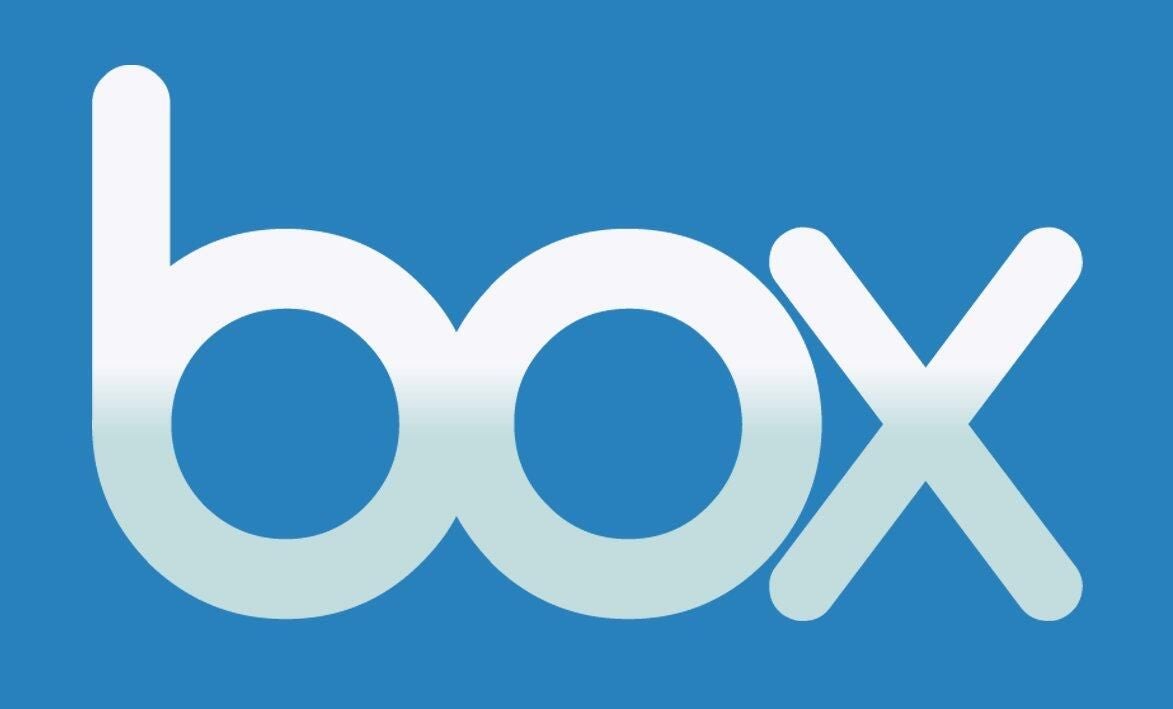
Box is a cloud service with more to offer than just storage. With the inclusion of collaboration tools, solid SSL encryption, tools that work with your installed office suites, and admin controls, Box enables the secure and reliable synchronization of your files and folders, as well as easy file sharing and team collaboration.
This smart person’s guide is a quick way to get up to speed on Box. We’ll update this guide periodically when news and updates about Box are released.
SEE: All of TechRepublic’s smart person’s guides
Executive summary
- What is Box? Box is a service that combines cloud storage and content management into a single point of entry.
- Why does Box matter? Box has taken the cloud to new heights with the addition of collaboration tools that make working on teams easier.
- Who does Box affect? Box affects everyone from consumers to enterprise executives.
- When is Box happening? Box was conceived in 2004, initially released in 2005, and has been evolving ever since.
- How do I start using Box? Create an account, log in, and you’re good to go. Mobile apps are available to make on-the-go collaboration even easier.
SEE: Cloud Data Storage Policy (Tech Pro Research)
What is Box?
On the surface, Box works in a similar fashion to most other cloud solutions. You create an account, install the software, log in to your account, and you can start working with your files.
The Box software options include: Box Sync, Box Notes, Box Edit, Box, and Box Capture.
- Box Sync is the desktop productivity tool that allows you to mirror data stored on your Box account to your desktop.
- Box Notes is a collaborative note-taking tool that can enable you and your team to plan together and share comments and updates about content.
- Box Edit is an add-on feature that allows you to edit or create files (by way of default applications installed on your desktop) directly on Box.
- Box is the mobile client that allows you to mirror data stored on your Box account to your phone or tablet.
- Box Capture is a mobile application that uploads photos and videos taken on your mobile device directly to your Box account.
There are Box Sync clients available for Mac and Windows; Box Notes clients for Mac and Windows; Box Edit clients for Mac and Windows; Box for iPhone/iPad; Box Capture for iPhone/iPad; Box for Android; Box for Windows Phone; and Box for BlackBerry. If you don’t want to install the client software, Box can be used via any web browser.
One caveat to using Box (in any form): Even though Box is a collaborative tool and offers an application called Box Edit, you cannot edit documents within Box–you have to use a third-party application such as Microsoft Office, LibreOffice (for Microsoft Office-type files), or Google Docs to create or edit files (the app used will depend upon the file type you’re editing).
Box offers three pricing tiers: Individual, Business, and Platform. For more details on the plans and their features, look at Box’s pricing matrix.
- Individual: This includes the Individual plan (free), which gives you 10 GB of storage with a 250MB file upload limit, and the Personal Pro plan ($10.00 USD/month), which gives you 100 GB of storage and a 5 GB file upload limit.
- Business: This includes the Starter* plan ($5.00 USD/per user/per month), which gives you 100 GB secure storage and a 2 GB file upload limit, the Business plan* ($15.00 USD/per user/per month), which gives you core sync and share capabilities, advanced security, customization, reporting, unlimited storage, and a 5 GB file upload limit, and the Enterprise plan* (contact Box for more information), which gives you content management with premier account and content security, as well as workflow automation.
- Platform: This includes the Integrate with Box (free) plan, which allows you to connect apps to Box using your own APIs, and the Build with Box Platform plan ($500 USD/per month and up), which allows you to bring Box’s secure content management and collaboration to your apps.
* The Starter, Business, and Enterprise plans require a minimum of 3 users.
SEE: Cloud computing pricing: Beware the bill shock (ZDNet)
Box takes security seriously. All Box data is encrypted using high-strength TLS encryption. Your data is encrypted at rest using 256-bit AES encryption and is further encrypted using an encryption key-wrapping strategy (again, using 256-bit AES encryption). Upgrade to a Business account and enjoy these additional security features:
- Admin console for user control and auditing
- Granular access permissions
- AD/LDAP integration
Box employs multiple data centers with reliable power sources and backup systems to ensure 99.9% uptime and redundancy.
Additional resources:
- Box Notes revamped, introduced as standalone desktop app (ZDNet)
- Box extends into workflow automation, potentially ServiceNow (ZDNet)
- Box continues global cloud push, expands Box Zones to Australia and Canada (TechRepublic)
- Box Zones remove data sovereignty obstacles for cloud users in Europe and Asia (TechRepublic)
- Go beyond simple file-sharing with Box for enterprise cloud content management (TechRepublic)

Why does Box matter?
The idea that the cloud is just a means to store and sync files is outdated. Users need more than just a place to house files…they need to work. Box rises above the sync-only crowd by making it easy to create teams for collaboration and employ local default file editors.
In addition, Box understands that more companies are depending upon cloud technology, which is why its Business plans offers plenty of features, including custom branding, mobile security controls, integration with enterprise mobility management (EMM) providers, data loss prevention, workflow automation, customized admin roles, enhanced session and account management, and device trust. Box gets business.
SEE: Cloud Computing Policy (Tech Pro Research)
If you work in an industry that requires HIPAA compliance, Box makes it easy to comply with regulatory mandates and supports defensible e-discovery and data-retention policies. Box supports global customers with ISO 27001, ISO 27018, SOC 1 (SSAE 16), PCI DSS, and FedRAMP, as well as in-region data storage in Europe, Asia, Australia, and Canada.
Additional resources:
- Why choice is essential when it comes to enterprise cloud vendors (TechRepublic)
- Why businesses are becoming less concerned about cloud security (TechRepublic)
- Box won’t say if it’s giving your secrets to the government (ZDNet)
- A terabyte too tight? Small businesses, beware the cloud storage ceiling (ZDNet)
- Mac vs. Windows incompatibility achieves irrelevance (TechRepublic)
- Electronic data retention policy (Tech Pro Research)
Who does Box affect?
Box affects business and enterprise users, developers, and consumers.
Box allows integration with developer APIs, as well as SDKs for web and mobile development. This means businesses aren’t limited to the current menu of features and can roll their own, so Box can be made to do exactly what the business needs–as long as your company has the necessary DevOps resources.
Additional resources:
- DevSecOps teams securing cloud-based assets: Why collaboration is key (TechRepublic)
- Why the cloud brings unique challenges to enterprise collaboration (TechRepublic)
- Job description: Cloud engineer (Tech Pro Research)
- Job description: DevOps engineer (Tech Pro Research)
When is Box happening?
Box was originally developed as a pet project of Aaron Levie while he was studying at the University of Southern California in 2004. It became clear Levie was onto something special, so he left school and formed Box with his childhood friend, Dylan Smith, who became the company’s CFO. In 2005, Box announced its initial release.
SEE: Download: The inside story of how Aaron Levie and his childhood friends built Box into a $2 billion business (TechRepublic)
Box made its first acquisition in 2009 when it purchased Increo Solutions. This addition made Box’s document collaboration and preview technology possible.
In July 2012 Box secured $12 million in funding from General Atlantic and was joined by investors Bessemer Venture Partners, DFJ Growth, New Enterprise Associates, SAP Ventures, Scale Venture Partners, and Social + Capital Partnership.
On January 23, 2015 Box held its initial public offering on the NYSE. The IPO was $14.00, and Box opened at $20.20; its closing price that day was $23.23. Box’s IPO raised $175 million and raised approximately $1.6 billion in capital.
Additional resources:
- Box’s Aaron Levie shares a warning about Wall Street for Snap (ZDNet)
- Box beats Q4 expectations, hits new milestone (ZDNet)
- After a pause and reboot, Box makes long-awaited Wall Street debut (ZDNet)
- Box CEO on cloud computing and encryption fight (CBS News)
- Box launches Shuttle, aims to land data migration deals (ZDNet)
- Peek at the smart tech inside Box’s new headquarters (TechRepublic)
- Aaron Levie: The most refreshing voice in the enterprise (TechRepublic)

Who are Box’s competitors?
Box is not alone in the cloud storage/sync world; in fact, there are plenty of competitors in the market. This is a list of some of Box’s competitors.
Each of these services offer cloud sync capabilities, but not all of them include the ability to edit documents or add teams, so your mileage may vary.
Additional resources:
- Box leads Amazon, Microsoft in cloud storage satisfaction survey (ZDNet)
- How much is Box starting to look like SharePoint? (ZDNet)
- Google’s new ‘Always Free’ tier gives your company a taste test of public cloud (TechRepublic)
- Google touts infrastructure updates at the 2017 Google Cloud Next conference (TechRepublic)
- Storj introduces a distributed blockchain-protected cloud storage service (ZDNet)
- How Microsoft thinks about partners and the cloud (ZDNet)
- 3 hybrid cloud alternatives to AWS CloudFormation (TechRepublic)
How do I start using Box?
Once you create an account with Box, you can immediately start working with the service. In order to edit documents, you will need to have a default document editor installed or have a subscription to a cloud-based office suite, such as Office 365 or Google Docs.
To ensure your data is sync’d to your mobile device, install one of the Box mobile apps: Box for iPhone/iPad, Box Capture for iPhone/iPad, Box for Android, Box for Windows Phone, or Box for BlackBerry.
Additional resources:
- Video: 3 considerations IT must make before moving to the cloud (TechRepublic)
- Video: The top issues your company needs to consider before implementing file-sharing services (TechRepublic)
- Box integrates with Google Docs, Springboard (ZDNet)
- Explore, manage, and clean your cloud for free with Unclouded (TechRepublic)
- Mini-glossary: Cloud computing terms you should know (TechRepublic)
- Video: 5 trends that form the future of cloud computing (TechRepublic)
- Power checklist: Managing and troubleshooting cloud storage (Tech Pro Research)